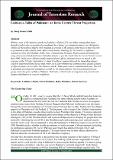Abstract
Within a year of the Mumbai attack by Lashkar-e-Taiba (LeT), the public outrage that many thought would usher in a political groundswell for a firmer government response, has dissipated. Almost all the political officials who resigned as a result of the attack either back in their old jobs or promoted to other plumb posts. After a brief hiatus, bombings by LeT and/or its affiliates resumed in cities like Mumbai, Delhi, Pune, Varanasi and Srinagar killing 56 people in mainland India and around 1000 in Jammu and Kashmir since Mumbai attack. India has done little of the painful public soul-searching that followed the September 11 attacks on the United States. After the Mumbai attack, while the US government has commissioned at least a dozen of official studies on LeT, India government commissioned none. While the LeT is gradually growing from strength to strength by encompassing the role of a political pressure group under the guise of Difa-e-Pakistan, India is blind to the danger unfolding in its western neighbour.
Citation
Rath, S.K. (2012). Lashkar-e-Taiba of Pakistan: an India centric threat projection. Journal of Terrorism Research, 3(2), pp. 91-99.
Publication
Journal of Terrorism Research
Rights
This is an open access article published in Journal of Terrorism Research. This work is licensed under a Creative Commons Attribution 3.0 License (http://creativecommons.org/licenses/by/3.0/)
http://creativecommons.org/licenses/by/3.0/


